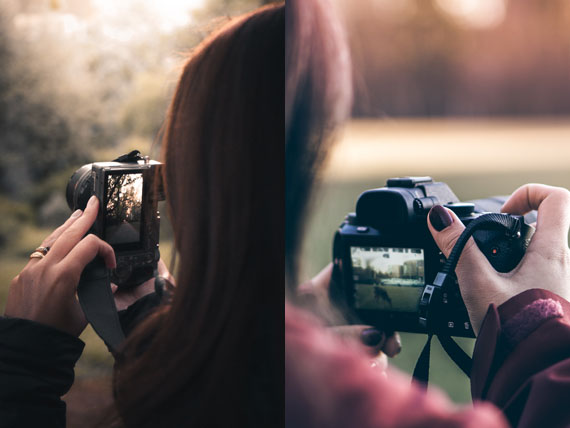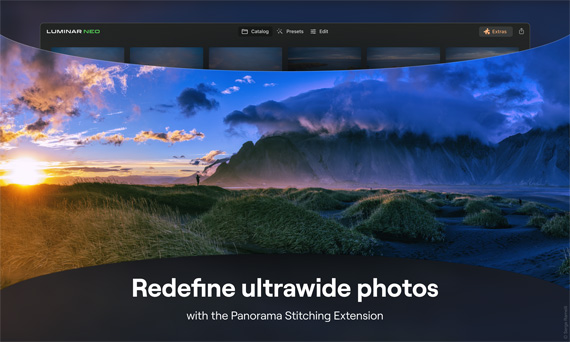When capturing panoramic images, the choice between landscape and portrait orientation can significantly impact the final result. Despite the simple distinction of turning the camera 90 degrees, each orientation offers unique benefits that may enhance or hinder your final composition depending on your subject matter and the image’s intended use. Let’s dive deeper into how these two orientations compare in terms of panoramic stitching.

Photos captured by Cezar Sampaio and Warren
Image Resolution and Detail
One of the main advantages of using portrait orientation for panoramic stitching is the enhanced vertical resolution. Since panoramic photography usually involves taking a series of images and stitching them together, using a portrait orientation means you’re capturing more data vertically, giving you a taller final image.
On the other hand, landscape orientation, by nature, captures more horizontal data in a single frame. This can be advantageous when dealing with broader subjects that may be difficult to cover using portrait orientation. However, it might result in lower vertical resolution when stitched together compared to portrait orientation.
Field of View
The orientation you choose also affects the field of view (FoV) of your final stitched panorama. In the landscape orientation, you get a wider horizontal FoV within each image, which might help you cover a wide scene with fewer shots.
However, in portrait orientation, you get a higher vertical FoV in each shot. This can be beneficial when you want to include more of the sky or foreground in the scene, such as capturing tall buildings or towering trees. Thus, for panoramic stitching, you might want to choose portrait orientation when the scene requires more vertical coverage.
Overlapping and Stitching Errors
The potential for stitching errors also varies between landscape and portrait orientations. When capturing in landscape mode, the shorter vertical edges may result in less overlap between images, increasing the likelihood of stitching errors or distortions.
Conversely, portrait orientation typically allows for more overlap between images, especially vertically. This increased overlap can provide more data for the stitching software to work with, potentially reducing the chances of errors and misalignments.
Ergonomics and Stability
The physical handling of the camera might also be a deciding factor. Some photographers find landscape orientation more comfortable and stable, especially when shooting handheld, which could lead to sharper images. Additionally, many tripods and panoramic heads are designed with the landscape orientation in mind, although portrait orientation is certainly possible with the right equipment.
On the contrary, using a portrait orientation might be somewhat awkward for handheld shooting. However, with a good tripod and a L-bracket, you can securely position your camera vertically with ease.
Concluding Thoughts
The choice between landscape and portrait orientation for panoramic stitching largely depends on your scene, the desired resolution, and your comfort level. If your scene is more horizontally expansive, or if you’re shooting handheld and need more stability, you might lean towards landscape. On the other hand, if you want to capture more vertical detail or reduce the chances of stitching errors, portrait could be your go-to.
Remember that photography is an art, and rules are merely guidelines. Don’t be afraid to experiment with both orientations in different scenarios. With practice, you will develop a sense for which orientation works best for your personal style and the particular scene you’re capturing.
Preorder Sale Ending Soon for New Panorama Stitcher:
In photo editing news another extension has come to the Luminar Neo editing platform, the new Panorama Stitching Extension allows photographers to create sweeping panoramic photos with unparalleled versatility by introducing four distinct creation methods:
Effortlessly stitch RAW or JPEG files to create seamless panoramic photos that convey the grandeur of vast landscape and cityscape scenes.
Final Day: Panoramic Photography Stitching Early Bird Offer
- - - - - - - - - - - - - - - - - - - - - - - - - - - - - - - - - - - - - - - - - - - - - - - - - - - - - - - - - - - - - - - - - - - - - - - - - -
Did you appreciate this newsletter? Please help us keep it going by Joining Our Patreon Supporters
What are your thoughts on this article? Join the discussion on our Facebook Page
PictureCorrect subscribers can also learn more today with our #1 bestseller: The Photography Tutorial eBook
- - - - - - - - - - - - - - - - - - - - - - - - - - - - - - - - - - - - - - - - - - - - - - - - - - - - - - - - - - - - - - - - - - - - - - - - - -
The post Landscape vs Portrait Orientation for Panoramic Photography appeared first on PictureCorrect.
from PictureCorrect https://ift.tt/HQtmgWO
via IFTTT







0 kommenttia:
Lähetä kommentti